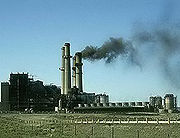Mental illness
Mental disorder or mental illness are terms used to
refer psychological pattern that occurs in an individual and is usually
associated with distress or disability that is not expected as part of
normal development or culture.
See also:
Categories of diagnoses may include mood disorders, anxiety disorders, psychotic disorders, eating disorders, developmental disorders, personality disorders, and many other categories.
In many cases there is no single accepted or consistent cause of mental disorders, although they are widely understood in terms of a diathesis-stress model and biopsychosocial model.
Mental disorders have been found to be common, with over a third of people in most countries reporting sufficient criteria at some point in their life. There are many different categories of mental disorder, and many different facets of human behavior and personality that can become disordered. The state of anxiety or fear can become disordered, so that it is unusually intense or generalized over a prolonged period of time.
Commonly recognized categories of anxiety disorders include specific phobia, Generalized anxiety disorder, Social Anxiety Disorder, Panic Disorder, Agoraphobia, Obsessive-Compulsive Disorder, Post-traumatic stress disorder.
Relatively long lasting affective states can also become disordered.
Mood disorder involving unusually intense and sustained sadness, melancholia or despair is know as Clinical depression (or Major depression), and may more generally be described as Emotional dysregulation.
Milder but prolonged depression can be diagnosed as dysthymia.
Bipolar disorder involves abnormally "high" or pressured mood states, known as mania or hypomania, alternating with normal or depressed mood.
Whether unipolar and bipolar mood phenomena represent distinct categories of disorder, or whether they usually mix and merge together along a dimension or spectrum of mood, is under debate in the scientific literature. Patterns of belief, language use and perception can become disordered.
Psychotic disorders centrally involving this domain include Schizophrenia and Delusional disorder.
Schizoaffective disorder is a category used for individuals showing aspects of both schizophrenia and affective disorders.
Schizotypy is a category used for individuals showing some of the traits associated with schizophrenia but without meeting cut-off criteria. The fundamental characteristics of a person that influence his or her cognitions, motivations, and behaviors across situations and time - can be seen as disordered due to being abnormally rigid and maladaptive.
Categorical schemes list a number of different personality disorders, such as those classed as eccentric (e.g.
Paranoid personality disorder, Schizoid personality disorder, Schizotypal personality disorder), those described as dramatic or emotional (Antisocial personality disorder, Borderline personality disorder, Histrionic personality disorder, Narcissistic personality disorder) or those seen as fear-related (Avoidant personality disorder, Dependent personality disorder, Obsessive-compulsive personality disorder).
For more information about the topic Mental illness, read the full article at Wikipedia.org, or see the following related articles:
















